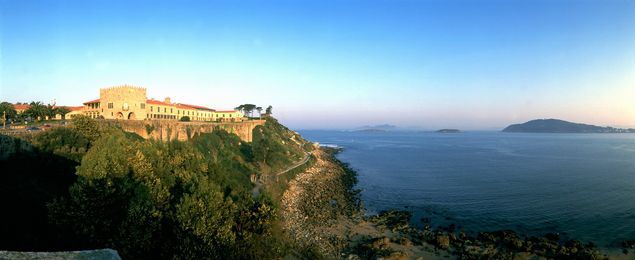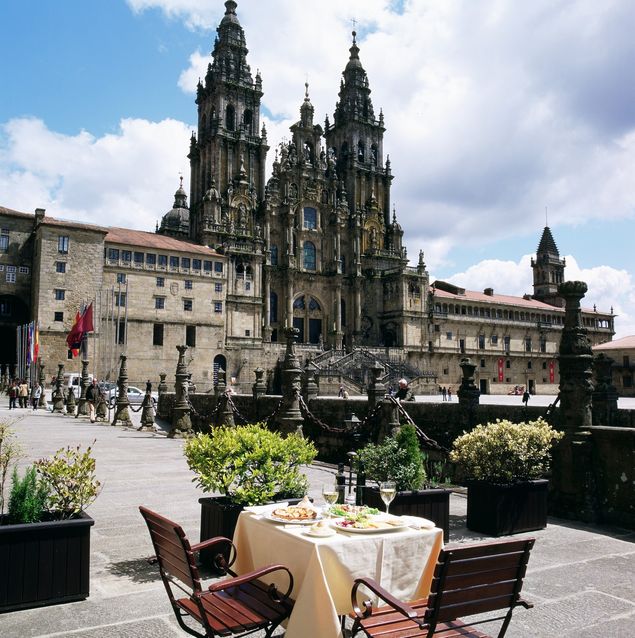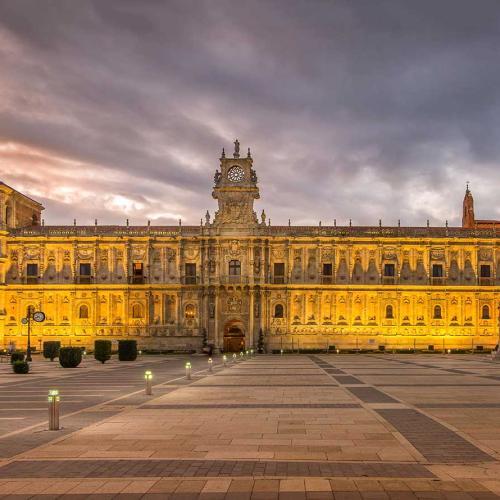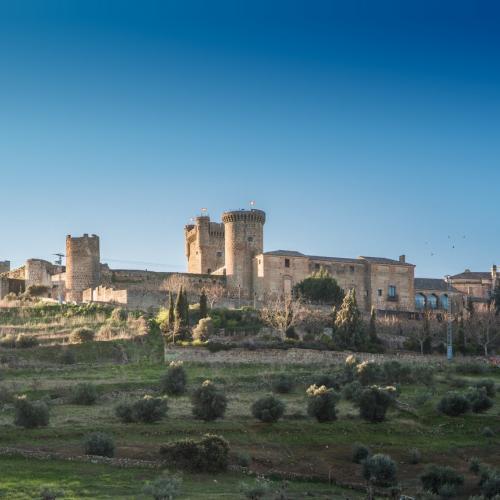The northern Spanish region of Galicia is world famous for its seafood. While many foodies can recognize which fish and crustaceans are the crème de la crème when looking at a menu, few are aware of just how much effort goes into retrieving these delicacies from the depths.
An example of the blood, sweat and tears poured into obtaining these tasty treats is the collection of goose barnacles, or percebes in Spanish. These funny-looking crustaceans are amongst the most sought after on the Galician coasts, and the most treasured by culinary experts. A delicacy like no other, goose barnacles are retrieved from rocky outcrops by brave fishermen, and later brought directly to your table at one of luxury hotel chain Paradores' traditional Galician restaurants, known as Enxebres.

Parador Baiona
Seafood and surf
Percebes grow on the emblematic rocky outcrops that make up the northern coast of Spain. Unlike mussels, goose barnacles have resisted all attempts to be bred in captivity, probably because they require natural tides to survive. Their natural habitat on the dangerous, windswept shoreline makes for complicated conditions for those who retrieve them. On the rare occasions that the sea is calm and the tide low, thanks to the influence of a full or new moon, the brave men that work in this trade descend into the surf from the cliffs above and cut the goose barnacles from the rocks.
Lowered down by rope, the men quickly fill their nets while a lookout keeps watch for high waves. If they are caught by the oncoming surf, the men risk being thrashed against the rock and dragged out to sea by the current. While the Galician government maintains a strict catch quota limited to six kilos per man per day, the work is considered to be well-worth the fishermen's efforts: at auction, a kilo of percebes can go for up to 300 euros.
Paradores throughout Galicia
After being retrieved from the sea, goose barnacles are taken to market auctions in towns throughout Galicia. It is there that they are acquired by Paradores for their Enxebres kitchens, located at their hotels in Santiago de Compostela, Vilalba, Verín, Pontevedra, Monforte de Lemos, Tui and Baiona. Meaning "typical, traditional, naturally from Galicia", "Enxebres" are special Paradores restaurants that feature Galician seafood, freshly caught and served in accordance with the most beloved local recipes.

Parador Santiago de Compostela
In addition to octopus and scallops, Enxebres often feature the famous percebes, caught nearby. They are cooked very simply to let the intense flavours of the sea play naturally on the palate: while some eat them raw, percebes are traditionally boiled in sea water without any other seasoning. Breaking the shell, guests twist the barnacle apart before sucking out the delicious flesh.
For authentic local seafood, check out the renowned Parador Santiago de Compostela, located within an ancient Royal Hospital and across the Plaza do Obradoiro from the Galician capital's famous cathedral. Established in 1499, this is considered to be the world's oldest continually operating hotel, and it is also one of the most beautiful, with cloisters and a luxurious dining room. Other options include Parador Pontevedra, a 16th century Renaissance palace in the historic centre of Pontevedra, or Parador Monforte de Lemos, a 17th century Benedictine monastery. On the coast itself, Parador Baiona treats guests to magnificent ocean views from this medieval fortress on the Monterreal peninsula.
Whichever Parador you choose to visit during your Galician holiday, you are sure to find fresh, delicious seafood available on the menu. Interested in booking your stay? Contact Paradores today.


